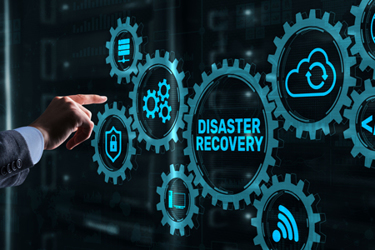How To "Sell" Disaster Recovery To CEOs
By Ahsan Siddiqui, Arcserve

CEOs have a lot on their plates, focusing on growth, competitiveness, profits for shareholders, and a range of other concerns. But there is a vital — indeed, existential — concern that many CEOs overlook: disaster recovery.
Most companies still don’t have a comprehensive disaster-recovery program in place. It exposes them to various serious risks—from natural disasters to cyberattacks—and all the impacts that come with them, including loss of revenue, the cost of penalties and fines, and the damage to a business brand caused by data loss or downtime. These impacts are usually fatal: 93% of companies that lost their data center for ten days or more due to a disaster filed for bankruptcy within one year, according to the National Archives & Records Administration.
Yet, despite this risk, channel partners and managed service providers (MSPs) still struggle to convince CEOs that a disaster of some kind is practically inevitable. Simply hoping it won’t happen is not a good plan.
Here are three ways MSPs can make a compelling case to senior management to think beyond the essential step of backing up their data and invest in a professional disaster recovery solution.
1: Teach The Difference Between Backup And Disaster Recovery
Your campaign to convince C-suite executives to invest in adequate disaster recovery will likely begin with education. It would help if you often taught them that there is a difference between data backup and disaster recovery. Both protect a company’s data, but they are different. Backup means making copies of critical data and having the copies available in case the original data is lost or jeopardized. Generally, backups are most reliable in the cloud or another secondary environment.
Backup is good, but it’s not enough to bring a fast and full recovery from a disaster. This is where disaster recovery comes in. A disaster recovery plan ensures quick and complete recovery from a disaster of almost any kind. It goes beyond backup. It’s a comprehensive plan that lays out every step necessary to recover fully and ensures those steps are taken. A solid disaster recovery plan includes data backup, but it goes further. It defines recovery objectives, roadmaps all the responses required of staff, and calls for regular tests of backup copies to make sure they are indeed recoverable. Think of it this way: backup is only one part of a broad-based disaster recovery plan.
2: Accentuate The Positive
Fear is a powerful motivator. But you also can convince CEOs they need disaster recovery with a positive message. A disaster recovery plan is an investment that can boost revenue and enhance business performance. Here you can emphasize that disaster recovery is more than getting systems back online. It’s also a chance for C-level executives to gain insight into every part of their organization, make sure the business is always available to customers, and, ultimately, succeed as an enterprise.
In short, disaster recovery is good for production and protection. As an MSP, you know this. But you also know that executives don’t often approve new initiatives unless they understand every angle of the initiative, the ins and outs, the ups and downs. Executives always have their budget top of mind, so if you can present a detailed outline of possible threats and the costs and benefits of a comprehensive disaster recovery program, your sales presentation is more likely to be successful.
3. Spread The News That DRaaS Is At Hand
Many businesses have discovered that assigning in-house IT staff members to the task of disaster recovery distracts those people from the job of supporting daily business activities. So now, many CEOs are turning to MSPs rather than devoting budgets and workers to creating, deploying, and maintaining a disaster recovery plan. Indeed, a broad range of IT functions, once handled on-premises, are now offered by vendors as a service. It is a labor-efficient approach, and it’s cost-efficient as well because it requires no investment in new infrastructure.
Disaster recovery as a service, or DRaaS, is a managed solution many MSPs offer today. In the event of a disaster that brings down an organization’s servers, disks, or other data resources, a DRaaS partner will step in quickly to restore data and infrastructure. On the front end, a DRaaS partner will ensure that all data is backed up regularly and that there is a solid plan to rapidly get infrastructure back up and running after a disaster. For CEOs, it’s peace of mind. With a DRaaS partner, they know they have experienced professionals to handle all recovery challenges and systematically manage all aspects of disaster recovery. They can be confident that a disaster, should it occur, won’t put them out of business.
Final Takeaway
No company CEO would drive a car without coverage or buy a home without insurance. Yet many continue to operate their business with no disaster recovery policy other than hoping a disaster won’t happen. It is not sound practice. And nowadays, with a wide range of experienced MSPs offering solid solutions, it’s entirely unnecessary.
